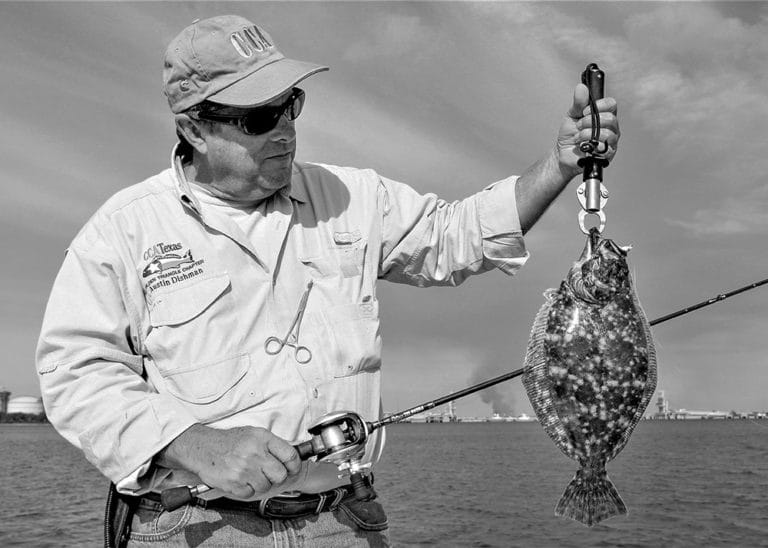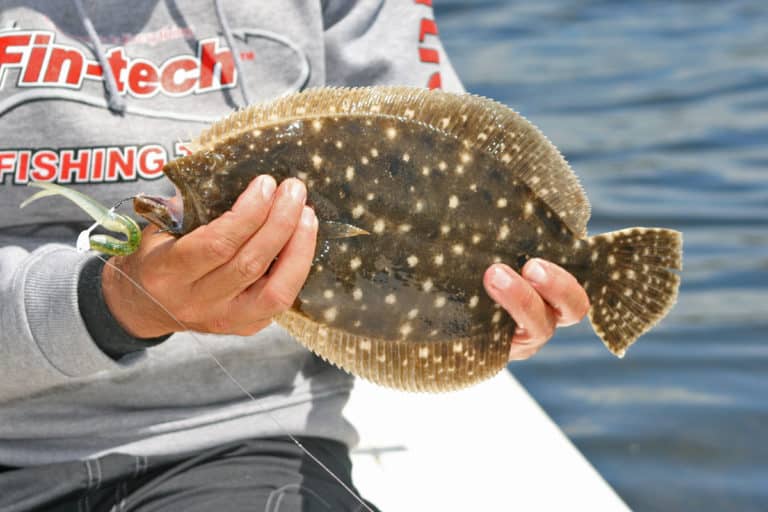
Recipe: Roasted Flounder
A seasonal fest with a southern twist
Flounder spend most of the year in deep water, but move inshore during spring, staging along beaches, in inlets, bays, canals and coastal creeks until fall.

A seasonal fest with a southern twist

Hit the fall flounder migration for top inshore action.

See our list of the best flounder lures and baits.

Use advanced tactics to score big on Gulf of Mexico flounder.
Flounders are a bottom-dwelling flatfish species, four of which are found in the western Atlantic and Gulf of Mexico. Gulf flounder, most abundant in the Gulf of Mexico, spend most of the year in bays and estuaries, migrating offshore to spawn during fall and winter. Southern flounder are found along the Atlantic and Gulf of Mexico coasts. Juveniles stay in estuaries, while adults spend the warmer months in bays and nearshore shelf waters.
Winter flounder reside primarily in nearshore waters of the Northeast, though juveniles settle in estuaries, bays, coves and coastal salt ponds. Summer flounder, also called fluke, are found throughout the eastern seaboard, but are most plentiful from Massachusetts to North Carolina. They spend most of the year in deep water, but move inshore during spring, staging along beaches, in inlets, bays, canals and coastal creeks until fall.
As flounder grow from the larval to juvenile stage, one eye migrates to the other side of the body, until both eyes end up on the side that faces upward when the fish lies on the bottom. Which eye migrates depends on the species. Flounder are also able to change the color of their top side to blend in with the surroundings, a camouflage that protects them from predators and helps them ambush prey, which include crabs, shrimp, polychaete worms, squid and small fish. A number of artificial lures work great for flounder as well.